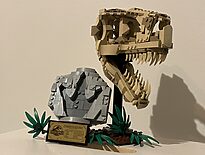In last week’s Audio EXP, Geek Native’s podcast, I said we’re in the weird limbo between Hogmanay and Christmas.

Hogmanay, I forgot, might not be a global word. It’s a Scots word for the last day of the old year. To be more confusing, Scots is a different language from Scots Gaelic. The former is a Germanic language and the latter Goidelic.
Both languages are suffering, rarely used anymore despite efforts, even from the Government, and partly due to controversial historical decisions like the Education (Scotland) Act of 1872, which enforced English as the language used in schools.
However, Dungeons & Dragons has made the word “cantrip” well-known, and it was originally a Scots word.
“Cantrip” comes from the Scots word “cantraip”, which would traditionally have meant a mischievous trick, a magical spell, or a piece of enchantment. Historically, it was probably used to describe any sort of magic, not necessarily a minor spell as D&D has, and probably more like a hex or charm.
In terms of etymology, “cantraip” like comes from the Scottish Gaelic “can” for sing or chant and perhaps the Middle English, “trippe” to trick or deceive. We can already imagine the D&D classes that would suit that combination.
The Dying Earth
Dungeons & Dragons’ magic system is heavily based on the work of author Jack Vance and the 1950 The Dying Earth. Not only was the word “cantrip” used there, but Vance also brought the term to The Demon Princes series.
For example, in The Face, Tippin says;
Words are what magic is made of! Have you not read Farsakar’s Cantrip Mechanisms? No? Then you know nothing of words!”
Therefore, I should credit Jack Vance with bringing the term to the attention of Gygax and Arneson, but it was D&D that made the old Scots word commonly understood worldwide.
Creative Commons image credit: Magic Book by LG-Design.

